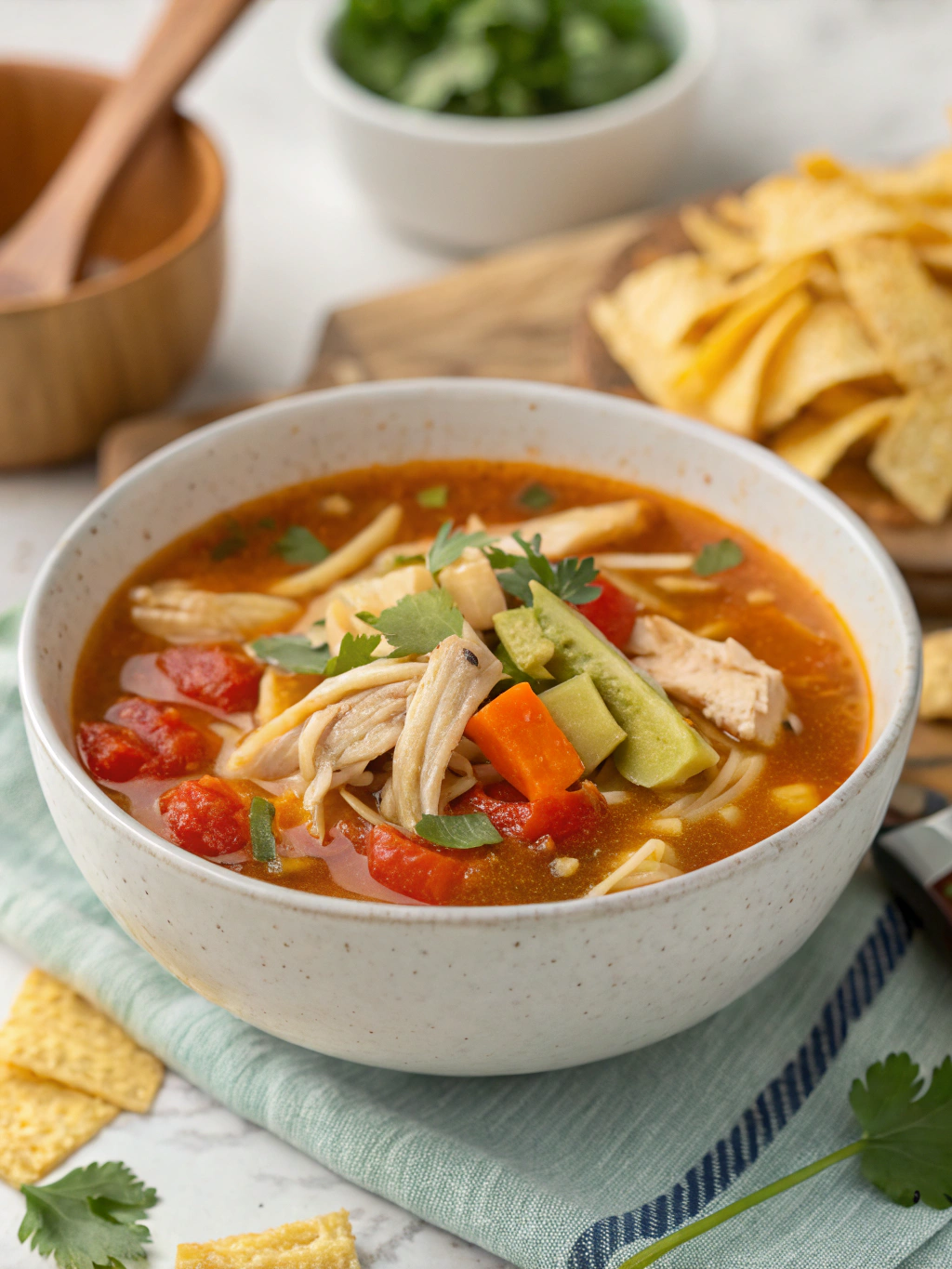Last Updated on April 7, 2025 by recipeinspire
Table of Contents
Pineapple Lemonade: A Refreshing Twist on a Classic Summer Drink

Pineapple lemonade is a refreshing drink that combines the tropical sweetness of pineapple with the tartness of lemon. This delightful blend not only quenches thirst but also offers various health benefits. Many enjoy it on a hot day, making it a popular choice for picnics and gatherings.
The drink has roots in regions where both pineapples and lemons thrive. Over time, it has evolved through different cultures, adding to its unique flavor profiles and variations. Whether someone prefers a classic recipe or an inventive twist, pineapple lemonade holds a special place in summer beverages.
In addition to its great taste, pineapple lemonade can be made with simple ingredients and various preparation methods. It can serve as a versatile base for different cocktails or stand alone as a delicious non-alcoholic option.
Key Takeaways
- Pineapple lemonade is both tasty and beneficial for health.
- The drink has cultural roots that enhance its flavor options.
- Simple ingredients lead to diverse preparation and serving ideas.
Origins of Pineapple Lemonade
Pineapple lemonade has its roots in tropical climates where both pineapples and lemons thrive. Understanding its history reveals how these fruits combined to create a refreshing drink enjoyed by many cultures.
Historical Background
Pineapples originated in South America around 1500 BC. They spread to the Caribbean and eventually to Europe after European explorers discovered them. Lemons have an even longer history, believed to have come from Asia and introduced to Europe around the first century AD.
The combination of these fruits likely began in the Americas. As people experimented with flavors, they mixed fresh pineapple juice with lemon juice for a sweet and tart beverage. This drink became popular in warm climates where both fruits were abundant.
Cultural Significance
Pineapple lemonade often reflects the culture of the regions where it is made. In many Caribbean nations, it is a staple at social gatherings and celebrations. The drink symbolizes hospitality and warmth, making it a favorite for festive occasions.
In the United States, especially during summer, pineapple lemonade is a common refreshment at barbecues and picnics. It is appreciated for its vibrant flavor and thirst-quenching qualities. Many restaurants and cafes now include it on their menus, showcasing the drink’s broad appeal.
Health Benefits
Pineapple lemonade offers several health benefits that make it a refreshing and nutritious choice. Its ingredients can contribute to hydration, aid digestion, and support the immune system.
Nutritional Profile
Pineapple lemonade combines the benefits of pineapple and lemon.
- Pineapple is rich in vitamins C and B6, manganese, and dietary fiber. One cup contains about 82 calories.
- Lemon is low in calories and high in vitamin C, providing about 31% of the daily recommended intake in one fruit.
Together, they create a drink that is flavorful and packed with essential nutrients.
The blend retains antioxidants that help fight free radicals in the body. This nutritional profile promotes overall health and supports a balanced diet.
Hydration and Digestion Aid
Drinking pineapple lemonade helps with hydration. Maintaining hydration is key for overall well-being.
- Water Content: Pineapple and lemon both contain a lot of water, helping to quench thirst.
- Electrolytes: Pineapple has potassium, which aids in maintaining fluid balance.
This drink also supports digestion.
- Bromelain: Pineapple contains this enzyme that can help break down protein.
- Citric Acid: Lemon provides citric acid, which can improve digestive health.
Together, these components can promote healthy digestion.
Immune System Support
Both pineapple and lemon play roles in supporting the immune system.
Pineapple contains high levels of vitamin C, which is known for its immune-boosting properties.
- It helps stimulate the production of white blood cells.
Lemons also help in this area.
- They are rich in antioxidants that protect cells from damage.
Including this drink as part of a balanced diet may enhance overall immunity. This refreshing beverage can be a tasty way to support health.
Ingredients and Variations
Pineapple lemonade can be customized in many ways. The right ingredients set the foundation for a delicious drink. There are also several variations that can enhance flavor and align with different preferences.
Classic Pineapple Lemonade Recipe
To make a classic pineapple lemonade, gather the following ingredients:
- 1 cup fresh pineapple juice
- ½ cup freshly squeezed lemon juice
- ½ cup sugar (or to taste)
- 4 cups water
- Ice cubes
- Lemon and pineapple slices for garnish
Start by mixing the pineapple juice and lemon juice in a pitcher. Add sugar and stir until dissolved. Then, gradually add water to the mixture. Adjust sweetness if needed. Serve over ice and garnish with slices of lemon and pineapple. This basic recipe is refreshing and perfect for summer gatherings.
Alternative Sweeteners
For those who prefer a different level of sweetness, many alternatives can be used in place of sugar. Here are some options:
- Honey: Natural and adds a unique flavor.
- Agave Nectar: Sweetens without overpowering the drink.
- Stevia: A zero-calorie sweetener, suitable for low-carb diets.
- Maple Syrup: Offers a rich taste.
Each sweetener has its own flavor profile. It’s essential to adjust the amount according to personal taste preferences. Experimenting with different sweeteners can create a pineapple lemonade that fits various dietary needs and tastes.
Creative Twists with Herbs and Spices
Adding herbs and spices can bring a new dimension to pineapple lemonade. Consider trying these options:
- Mint: Provides a refreshing finish; muddle it before mixing.
- Basil: Adds an aromatic touch.
- Ginger: A hint of warmth enhances the flavor.
- Cinnamon: A pinch can add warmth and spice, especially for autumn.
To incorporate these ingredients, muddle fresh herbs or finely grate spices into the pitcher. This can transform the standard lemonade into a unique and delightful refreshment. Each addition offers a distinctive flair, making it perfect for any occasion.
Preparation Techniques
Making Pineapple Lemonade involves key steps to bring out the best flavors. The right methods for juicing and mixing can affect the taste and texture of the drink.
Juicing Methods
To make Pineapple Lemonade, fresh juice is essential. For the best results, use a juicer or a good blender.
- For Pineapple: Cutting the pineapple into chunks allows for easier juicing. If using a juicer, simply push the chunks down into the chute. For a blender, blend until smooth and then strain through a fine mesh to remove pulp.
- For Lemons: Roll the lemons on the counter to release juice. Cut them in half and use a juicer or squeeze by hand to extract the juice. Fresh lemon juice is critical for a bright flavor.
Using these methods ensures a fresh taste and the right balance of sweetness and acidity.
Blending vs. Stirring
When making Pineapple Lemonade, choosing between blending and stirring can change the drink’s texture.
- Blending: This method combines all ingredients, including ice, into a smooth and frothy texture. It’s perfect for those who prefer a frozen drink.
- Stirring: This is simpler and lighter. Mix fresh pineapple juice, lemon juice, and water in a pitcher. Adding ice cubes directly keeps the lemonade refreshing and crisp without the heavier texture of blending.
Each technique has its benefits based on personal taste preferences, offering both a vibrant and appealing drink.
Serving Suggestions
Different ways exist to serve Pineapple Lemonade effectively. Choosing the right glassware, adding decorative garnishes, and selecting suitable food pairings can enhance the drinking experience.
Appropriate Glassware
Choosing the right glass can elevate the drink’s presentation. For Pineapple Lemonade, use tall glasses, such as highball or mason jars. These types of glasses showcase the drink’s vibrant color.
Consider using crystal clear glass to emphasize the freshness of the lemonade. This allows the drink to shine and look more inviting.
For a more casual setting, plastic tumblers can work well, especially for outdoor events. They are durable and minimize the risk of breakage. Chilled glasses can also keep the drink cold longer.
Garnishing Tips
Garnishing adds visual appeal and flavor. Fresh pineapple slices on the rim provide a tropical look. This can include mint leaves for a splash of green.
Using a colorful straw can enhance the aesthetics. Think about contrasting colors. For a fun touch, try using cocktail umbrellas.
Another option is to rim the glass with sugar for sweetness. This adds a unique texture. Slices of lemon or lime can also be added for an extra zesty kick.
Pairing with Foods
Pineapple Lemonade pairs well with various foods. For a refreshing combo, it goes nicely with grilled chicken or fish. The citrus notes complement the flavors in these dishes.
Serving it with light salads is a great option too. Salads with fruits, nuts, or a light dressing match the drink’s refreshing taste.
For snacks, consider fruit platters or chips with salsa. These pairings keep the meal light and enjoyable. Adding spicy or tangy elements helps to balance the drink’s sweetness.
Storage and Preservation
Proper storage and preservation of pineapple lemonade can enhance its freshness and flavor. Knowing the right techniques will help keep this refreshing drink enjoyable for longer.
Refrigeration Best Practices
To store pineapple lemonade in the refrigerator, it should be placed in an airtight container. Glass or plastic bottles with tight-sealing lids work well. This will prevent oxidation and keep the lemonade tasting fresh.
The lemonade can last in the fridge for about 3 to 5 days. It is best to check for any changes in color or smell before consuming. If the liquid appears cloudy or has an off smell, it should not be consumed.
For the best flavor, serve it chilled. Before drinking, giving the lemonade a light stir will help mix any settled ingredients.
Freezing Techniques
Freezing pineapple lemonade can extend its shelf life up to several months. To freeze, pour the lemonade into freezer-safe containers, leaving some space at the top. This allows for expansion as it freezes.
Ice cube trays are another option for freezing. Once frozen, the cubes can be transferred to a zip-top bag for easy use.
When ready to enjoy, the frozen lemonade can be thawed in the refrigerator or at room temperature. For quick enjoyment, frozen cubes can be blended into smoothies or used in drinks.
Pineapple Farming and Lemon Cultivation
Pineapple and lemon farming involves various techniques that focus on both sustainable practices and specific growing regions. Understanding these aspects helps readers appreciate how these fruits are produced and the impact on the environment.
Sustainable Practices
Sustainable farming methods for pineapples and lemons promote environmental health. Farmers often use organic fertilizers and pest management techniques to reduce chemical use. Cover cropping is common, which helps maintain soil health.
Additionally, drip irrigation conserves water by delivering it directly to the plant roots. Intercropping with other crops can improve biodiversity and yield.
These practices not only support the environment but also enhance fruit quality. As consumers become more eco-conscious, sustainable methods have become more important in fruit production.
Global Production Regions
Pineapples thrive in tropical climates. Major producers include:
- Costa Rica
- Philippines
- Thailand
Lemon trees prefer warmer, dry climates. Leading production areas for lemons are:
- California, USA
- Spain
- Argentina
These regions’ specific climates and soils contribute significantly to the quality and taste of the fruits. Understanding these production areas helps consumers appreciate the variety and characteristics of pineapples and lemons in the market.

Pineapple Lemonade
Description
Pineapple lemonade is a refreshing drink that combines the tropical sweetness of pineapple with the tartness of lemon.
Ingredients
Pineapple juice (2 cups)
Lemon juice (1 cup)
Water (2 cups)
Sugar (1/2 cup)
Ice (as needed)
Pineapple slices (for garnish, optional)
Mint leaves (for garnish, optional)
Instructions
In a pitcher, combine pineapple juice, lemon juice, water, and sugar.
Stir until sugar is dissolved.
Add ice and stir well.
Garnish with pineapple slices and mint leaves.
Keywords: Pineapple Lemonade
The Best Pineapple Lemonade Recipe | The Recipe Critic








